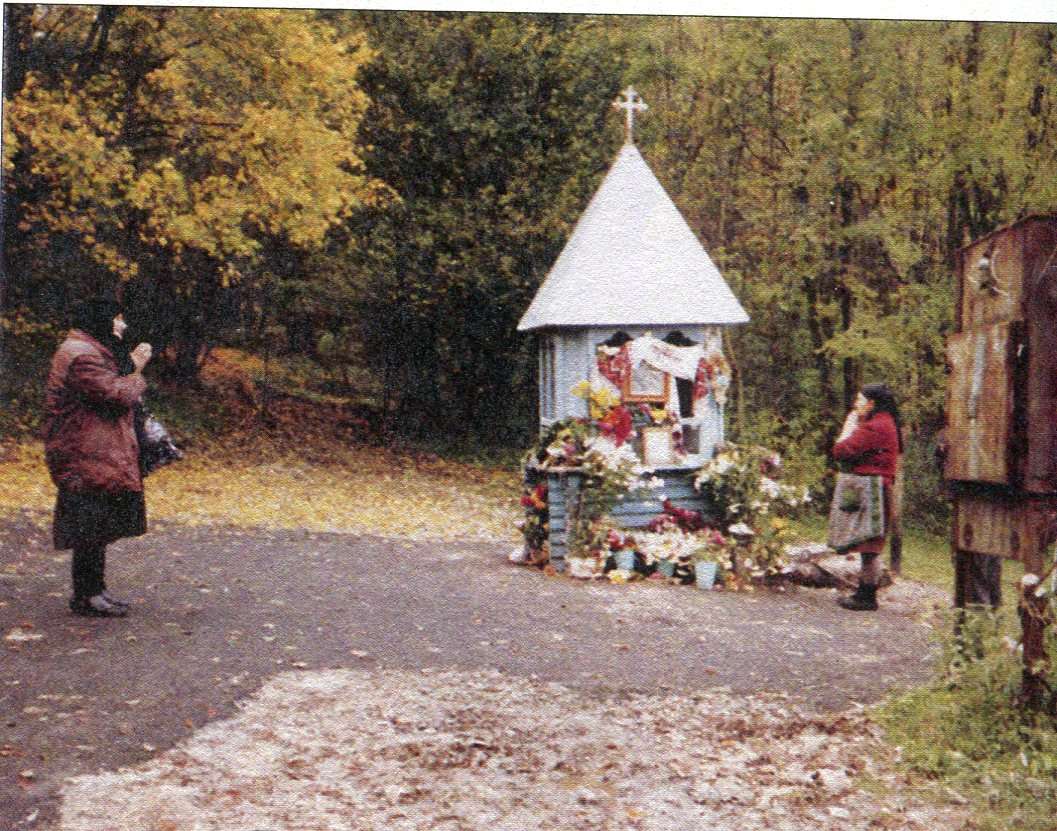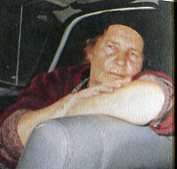If you want “real news,” visit the place where it is happening (if you can), before proclaiming whatever you’re hearing as absolute reality. Many who call news items “fake news” themselves are unknowingly spreading wrong stuff around social media, e-mail lists, and blogsites (“information” often jarringly similar to Russian “disinformation”). Don’t rely on those who theorize conspiracies from afar (which isn’t to say conspiracies don’t exist). Especially, don’t rely on dubious locutionists.
Be careful. Do discern. The next “special report” will be on the topic of prophecy (and a new, interesting, to-be-discerned seer).
When I think of supernatural phenomena and current news, I sometimes reflect on a visit to Ukraine thirty years ago as “Soviet” (Communist Russian) rule was falling and Catholic churches were reopening (Communists had been far more tolerant of the Russian Orthodox, for the Kremlin controlled and still influences that Church’s hierarchy). This isn’t “fake.” These are simple, irrefutable facts. I watched them unearth skulls in the basement of one church where two priests and others had been brutally killed.
It is very Marian territory, especially the west. But even in the east, Mariupol, much in the news as Russians attack it, means “City of Mary.”
I flew from Moscow to Kiev (as it was spelled then; now Kyiv) and on to my destination of Lviv (back then some of the maps, including Ukrainian ones, spelled it “Lviw,” pronounced “la-view”) and one of the shrines I visited was at Zarvanytsya, about 112 miles from my hotel. I hired a car owned by a man named Roman whose wife was a doctor (one of the very few private vehicles back then; I gave them aspirins and extra rolls of toilet paper, both scarce even, in 1991, for a physician) and can tell you that I rate Zarvanystya (also spelled Zarvanystia) in my top ten sites of apparition (alongside Guadalupe, Fatima, Lourdes, Medjugorje, Laus, Kibeho, Miraculous Medal, Betania, and Montserrat).
This is a place with history. A miraculous icon.
The village and the icon date back to the 13th century.

In 1240, a monk fled Kyiv, which had been devastated by a Mongol invasion, and, as the online encyclopedia can tells us, “stopped in a secluded valley to drink water from a spring and pray to the Blessed Virgin.
“Having done so, and exhausted by the long travel, he fell asleep and saw the Mother of God.
“After awakening completely rejuvenated, he found the icon and decided to stay there and build a chapel by the spring to house the icon. News of the miraculous icon spread among the local population and reached the gravely sick duke of Terebovlia Vasylko (brother of the only Ukrainian king Danylo of Halych). The duke ordered the icon to be brought to him but when the monk refused, he himself traveled to Zarvanytsya and prayed in front of the icon and was cured. Out of gratitude, he founded a church and monastery there.

“The first written mention of the settlement dates to 1458. Ruins of fortifications from around that time can still be found in the village. During the years 1662–1688, the village was plundered by Turks, and the church was burned down but the icon was saved and placed in a newly built church. In 1740 another icon, of the Crucified Christ, was also placed in Zarvanytsya, and two years later crowned by Metropolitan Athanasius Sheptytsky.”
The greatest crisis for Zarvanytsya came with the advent of Soviet (read, Russian) rule. The monastery was torched, along with its church, while the parochial church of the Holy Trinity was closed and turned into a warehouse — the miraculous spring surrounded with barbed wire and turned into a dump.
During major holy days, the entire village was blocked by the militia. In 1946, the entire Ukrainian Greek Catholic Church was officially banned by the Communists and made subject to the Moscow Patriarchate. This is real news, and real persecution.
I visited the site because in the mid-1980s, during an eruption of apparitions across the Ukraine, past the turkeys rooting in trees and the horse buggies (more primitive even than Medjugorje in the early days), I learned that Mary began reappearing at Zarvanytsya around the time that Pope Saint John Paul II conducted what many feel was an adequate consecration of Russia, causing the Iron Curtain to collapse. It was the time of Gorbachev’s rise to power.
“One day on my way to cut wheat, I stopped to see why there was a crowd around the well,” Chornij Zenovia, a saintly woman who had spent years at a Russian concentration camp in Siberia, told me through my translator. “The people said they were seeing the Holy Mother. I knelt and started praying very hard and suddenly instead of the well I saw a big glow, like a mountain, and in it I saw a lady holding a baby in her arms.
“The light was like silver. The lady was in blue clothes with a white sash, and a barefooted baby was in her arms. On her head Mary had a white shawl. I saw this for about half an hour.
“The glow was seen very often for two or three weeks in 1987, I think the autumn. The Holy Mother warned us to return to the Church and love one another. Personally I took it as a sign that Communists would disappear from the face of the earth.”
Although the KGB moved in with force — unleashing attack dogs and clubbing pilgrims to the point where a number required hospital treatment — the apparitions continued at least through 1988, as I learned in speaking with Mykola Krushelnyckyi, a factory worker who was walking up a dirt road one evening in December of that year when he spotted something in the sky over the vicinity of the well.
“I was going to the next village, approaching the river, and I saw above the forest a huge glow,” he told me. “In the middle was a round picture that looked like the Virgin Mary, from the waist up, holding Jesus in her arms, with silver clothes. On her head was a golden crown.
“I returned because I was scared. I had a feeling when she was holding the baby in her arms she was moving her head, bowing or looking toward the baby. I didn’t hear any sound. The light around her was like the moon. There was a cross hanging from her neck and a heart. She was rather sad. She was looking toward the sky and making this head movement.”
The glowing mass, which was at least twice the height of a tall tree, moved north over the woods and meadows, fading beyond and behind a mountain like an ephemeral cloud.
And so went my visit there.
Real news. Actual news.
And I’ll never forget that though, as I said, virtually no one had a private car — let alone peasants — and though Zarvanytya was 112 miles from my hotel in Lviv, the next morning, when I attended Mass at the closest church (the Lviv cathedral), there, at the back, standing, in the little crowd — impossibly — was Chornij Zenovia. She was alone. It made no sense. The peasant farmer in the middle of a big city.
We looked at each other and smiled. I approached her. I had no translator with me. We couldn’t communicate. But we both embraced eyes.
It was her.
How did she get there? And to boot, the very next morning, after meeting her way in the hinterlands?
Many are the mysteries in Ukraine.
–MHB
[resources: The Final Hour]



